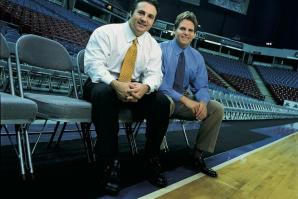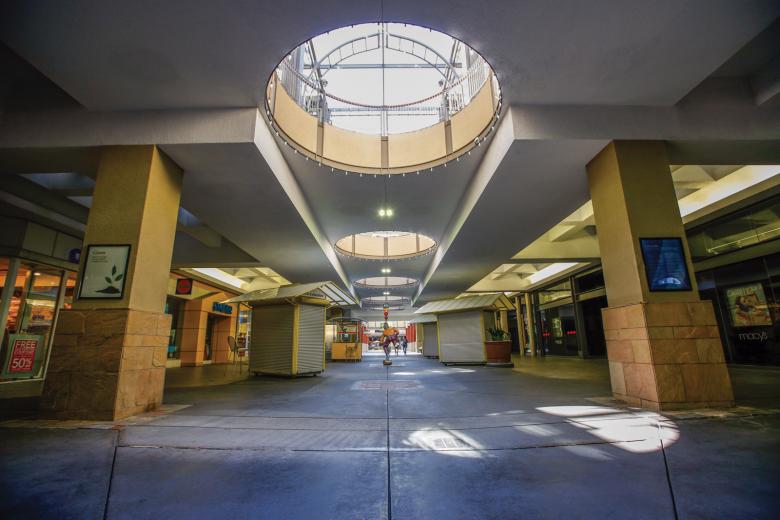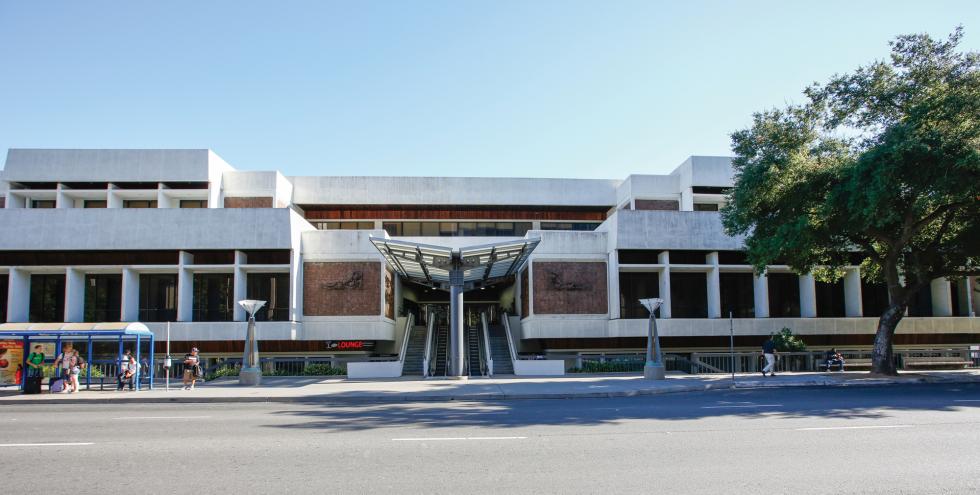Already embraced by business and city leaders as a catalyst that will ultimately launch a regional renaissance, Sacramento’s long sought and hotly debated entertainment and sports complex is finally taking shape. Despite one recalcitrant property owner, a pesky signature gathering effort and the usual parking and traffic naysayers, the project long known as the downtown arena now has an ownership group, a strategic plan and — most importantly — a public/private funding mechanism. But it’s also coming to life under an ambitious timeline, and there are still question marks looming over a number of project elements, including public transportation, land procurement and the timing of the environmental impact report.
The National Basketball Association has mandated that Sacramento’s new $448 million arena be completed in time for the Kings’ 2016 season, moving the team from its current location in neighboring Natomas and causing a whirlwind of activity in the Sacramento City Planning Department. Whether the city has the expertise and necessary staffing to expedite the seemingly endless approval process is a legitimate concern, and under the NBA’s tight deadline, there is little leeway for red tape or squabbling à la City Council.
Assistant City Manager John Dang-berg insists the city’s staff will not hinder the project. “Don’t call it bureaucracy,” he says. “Call it efficient public service.” He says that because the city already completed a great deal of work planning for the arena to be built in the city’s undeveloped railyards (a project that was proposed in 2012), the staff’s systems for permit review, inspection and approval is already established.
Additionally, much of the real estate procurement process has so far been problem free, save for one chunk of property demanding extra attention. Sacramento’s Downtown Plaza, located between 4th and 7th streets and L and J streets, was purchased last year by real estate development firm JMA Ventures. Moreover, the company had already financed a feasibility study for placing an arena at the site. When plans by former Kings owners to move the team to Seattle became public in January, that feasibility report was quickly in the hands of new potential Kings buyers and the NBA board of directors. The completed study also hastened the beginning of the required environmental impact report (EIR), which should be completed by next summer.
It should also be to the timeline’s advantage that, this time around, the city isn’t acting as the developer, as it did for the scuttled railyard plan. The new ownership group, Sacramento Basketball Holdings, has the responsibility of hiring the environmental consultant, general contractor and architect. The owners will be paying $190 million plus any costs that drive the project over its $448 million budget. The city’s share is $258 million, and it will own the arena once it’s completed.
“So now the city is in a position to do what it traditionally does,” Dangberg says. That means processing entitlements, approving designs, checking plans and inspecting buildings. “Yes, we have a smaller — but more efficient — staff than we had in 2005. But we absolutely have the capacity to meet the needs of this project. At this point, we are on track and on schedule with the EIR. And, quite frankly, we are currently ahead of the design team in terms of the [California Environmental Quality Act] process.”
Dangberg says there are some fundamental design elements, including the project footprint and some traffic control issues, that have to be determined in order for the environmental impact report to move forward, but the process is still on schedule.
Chris Granger, president of Sacramento Basketball Holdings, says the group’s work with the city staff has been going very smoothly.
“We talk with them virtually every day, as we do with JMA and other downtown business interests. When we have discussions, we have people from all these groups at the table” he says.
The bigger challenge is acquiring the 600 block of K Street, home of the Macy’s furniture and men’s clothing store.
Most of the property required for the planned entertainment and sports complex has already been sold to the ownership group by JMA. But the 600 K St. property is controlled by US Bank. And while the Sacramento City Council has threatened to seize the property through eminent domain, talks between the Kings and US Bank are continuing. Macy’s will vacate the space when its lease expires later this fall.
Despite this hiccup, Granger says the EIR has not been stalled and does not currently jeopardize the schedule for a 2016 completion date. The report is being handled by the Sacramento office of Environmental Science Associates, and if it stays on schedule through the various governmental reviews and approval processes, City Manager John Shirey estimates demolition of existing buildings could begin as early as next June.
As of press time, the King’s filled out their construction team with the announcement of AECOM as the lead architecture firm. Based in Los Angeles, the international sports architecture firm has an impressive resume, including the Barclays Center in Brooklyn.
“City staff strongly believes that it’s important to design and build the arena in the context of a larger urban environment,” Dangberg says, “and that it creates all the right connections to the rest of the city.”
Of most importance, according to Dangberg, is that the project and its surrounding infrastructure smoothly connect with key downtown assets including the intermodal transit center, the railyards, Old Sacramento, the waterfront and the convention center.
“All of these things need to work together,” Dangberg says.
Two issues of concern to downtown arena detractors are parking and traffic. But Dangberg says, “Even after losing about a thousand current parking spots due to construction requirements, there will still be more than 19,000 parking spots in the downtown area.”
There are only 7,000 parking spots at the Natomas arena, and Dangberg says the new downtown location will be much better situated to handle the traffic density created by events.
“When there’s a game now (in Natomas), most of those people are bobbing and weaving up [Interstate 5]. It has a dangerous funneling effect,” Dangberg says. “That same population will now have multiple entry points to get into downtown. And since there will be much more to do downtown before and after events, everybody won’t be arriving and leaving at the same time, as they do in Natomas.”
Dangberg says a traffic management plan will be included in the EIR but that it’s really not as big of a problem as some people think.
“People are going to select their favorite route in and out of our city grid,” he says. “It shouldn’t prove to be that big of an issue. And when it comes to parking, we currently have a tremendous parking resource that is underutilized at night. We’re taking a parking infrastructure that the public has invested tens of millions of tax dollars in and putting them into use at night. That sounds like a financially sound move to me.”
Additionally, Regional Transit is planning upgrades to lightrail and bus services. According to RT Executive Director Mike Wiley, the transit system is in early conversations with the ownership group’s development team and city staff.
“Our biggest challenge is the takeaway, when you have 19,000 folks coming out of the event at one time, many of whom will be looking for lightrail,” Wiley says. “We’re working with the development team in creating a bit of spacing that will allow us to stagger the crowd a bit.”
He says a plan is in the works that will allow for the storing and staging of trains and buses on nearby streets and lines that receive less traffic. These will then be available for more frequent pickups during post-event times. Regarding the pre-event rush, Wiley says RT is already well equipped for that impact.
“Most events start around 7 p.m., so people will be heading in around 6 p.m. The trains leaving town are full of people heading home. The trains coming into town usually have a great deal of capacity,” he says.
Mark Freidman, founder and president of Fulcrum Property, and a member of the Kings’ ownership group, brings years of regional development experience to the project. He says building the arena is actually the easy part because there are plenty of successful models to emulate.
“The challenge,” he says, “is to make sure the arena works with the rest of downtown. We have to build a great civic space. We’re not designing a building; we’re creating an experience. It has to function at lots of different scales. It needs to be an iconic representative of the best of Sacramento, without referencing the gold rush, Tower Bridge, state Capitol or railroad.”
Freidman cites the Barclays Center, which opened a year ago in Brooklyn, as a great example. Home to the NBA’s Brooklyn Nets, he describes it as a “spectacular and exciting facility that is iconic in focus but feels like it fits in Brooklyn.”
Michael Ault, executive director of the Downtown Sacramento Partnership, says the arena project is already driving outside interest into the region.
“Brokers and investors from around the country are now very
interested because something new is happening in one of the most
underdeveloped downtowns in the western United States,” he
says.
But he cautions that a coordinated effort between the ownership
group, the city and downtown property and business owners is
critical for the long-term success of the downtown district.
“We don’t want outsiders coming in and buying up a whole lot of property and then just sitting on it and tying it up for a long time. We also don’t want somebody quickly throwing up a bunch of Subways and 7-Elevens,” Ault says. “We need to create an overall, active, downtown district. Otherwise, we’ll just duplicate what Natomas is — an arena on an island.”
Turner Construction is poised to help make this vision a reality. The firm ranks as the largest sports complex contractor in the country and typically averages about $600 million a year in sports-related projects. Its resume includes the new San Francisco 49er’s Levi’s Stadium, a renovation at Madison Square Garden, the Orlando Magic’s Amway Center and the aforementioned Barclays Center. In total, Turner Construction has built 38 arenas, 12 for NBA teams.
The Sacramento project is expected to create hundreds of local construction-related jobs over the course of more than two years. And while some tasks will require highly specialized skill and expertise that may not be available locally, the company will be looking to subcontract with as many regional firms as possible.
“For sports complexes, typically 65 to 75 percent is procured and installed by local companies,” says Dale Koger, vice president and general manager of the Sports Group for Turner Construction. “Local [subcontractors] are a very important part of the construction culture.”
Dangberg and his staff are looking forward to working closely with Turner Construction, project manager ICON Venue Group and AECOM. And he remains adamant that city will be able to keep up.
“We have to work very strategically with the workforce that we have. This will require a layering of tasks among our team members and lots of meetings to keep everyone informed,” he says. “But remember, the approval process itself is a cash flow to the city. We’re not doing this for free. If construction activity gets to the point where we need to bump up, we will have the resources to bring on consultants.”
Recommended For You

Mayoral Musings
'Strong Mayor' will make city more nimble, NBA matchmaking and soccer in Sac
It’s been quite a year for Sacramento Mayor Kevin Johnson, topped in most people’s minds by his stunning, come-from-behind effort to block the Maloof family from selling and relocating the Sacramento Kings. We sat down with him recently to discuss basketball and several other topics important to the Capital Region.

Aloof Maloofs
How Gavin & Joe went from Sac royalty to would-be carpetbaggers
Then:
As part of the Comstock’s-sponsored Vanguard Awards issue in Sept. ‘02, the infamous Gavin and Joe Maloof graced our cover as “Outstanding Corporate Citizens.”




